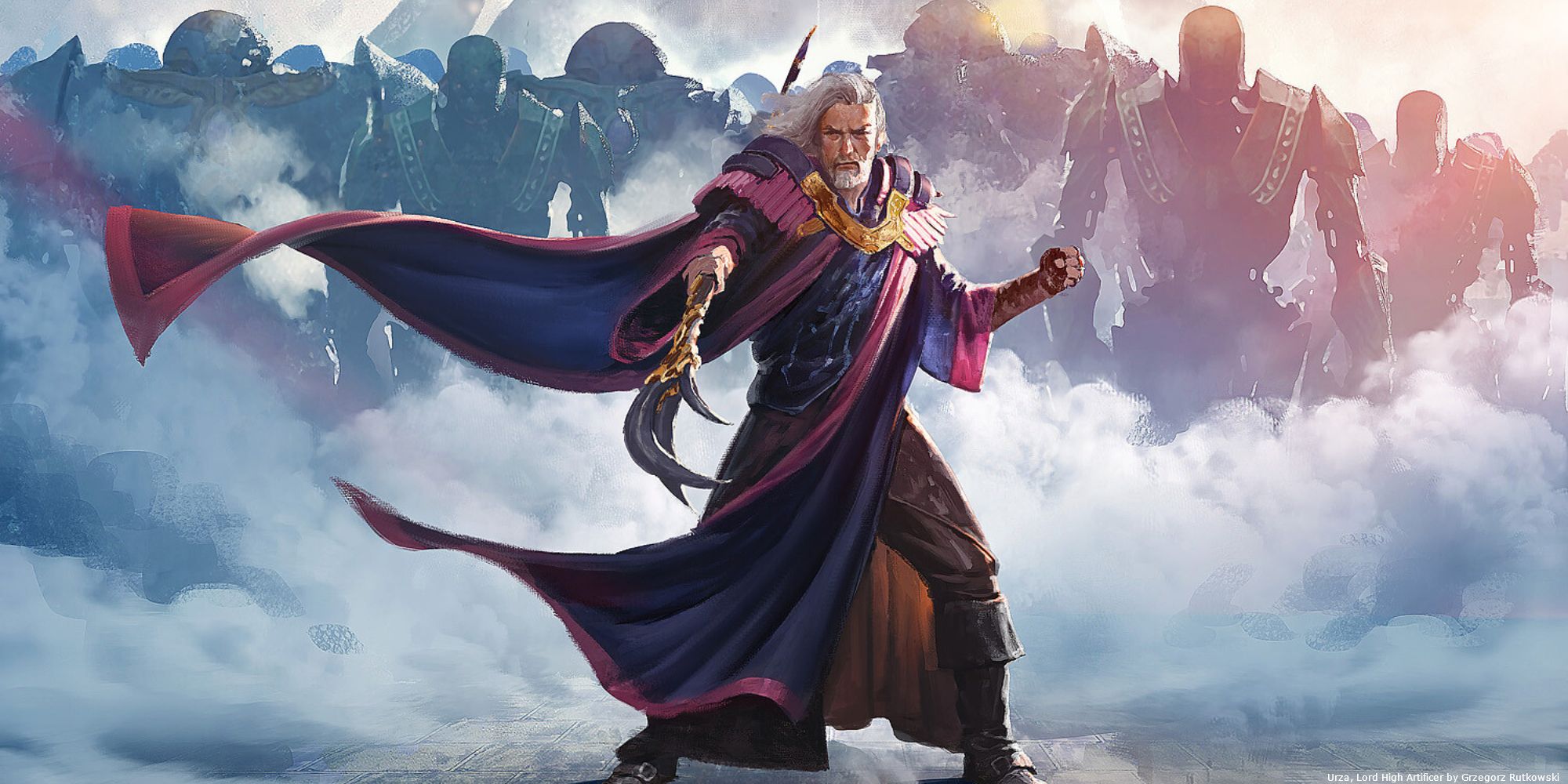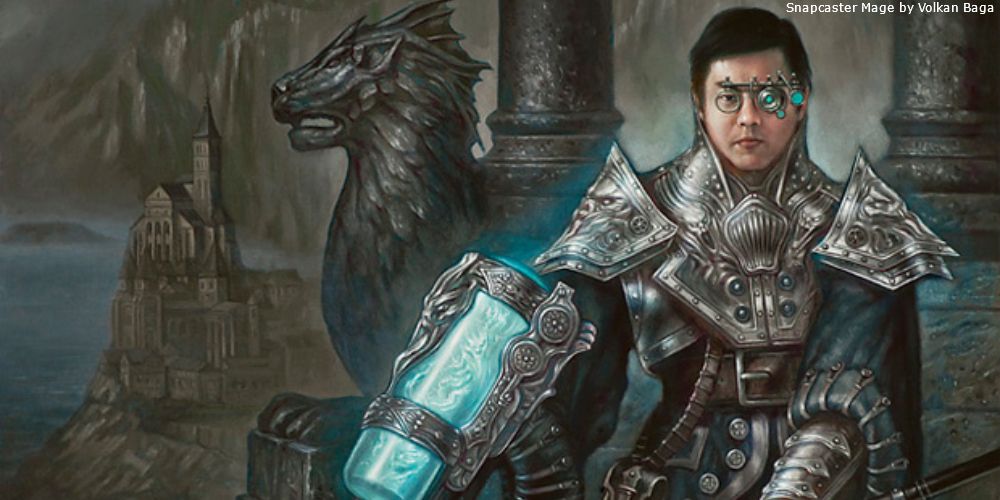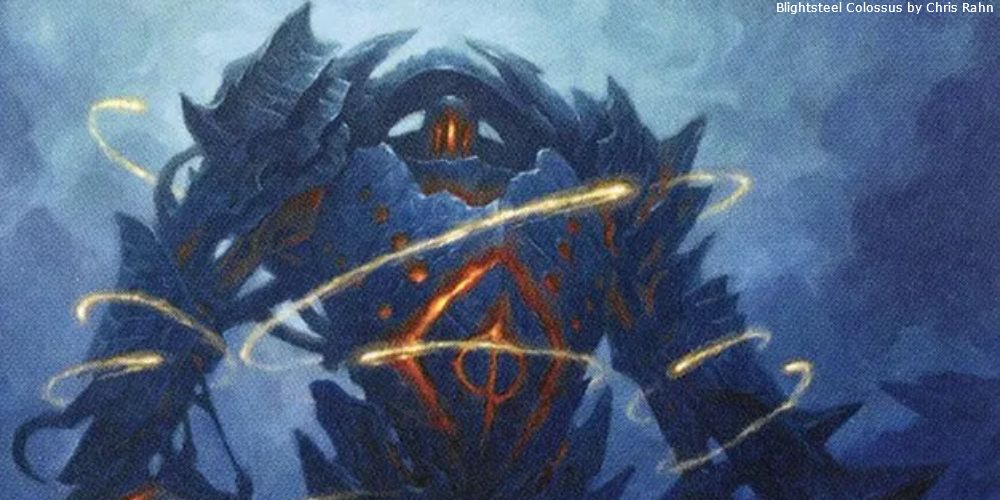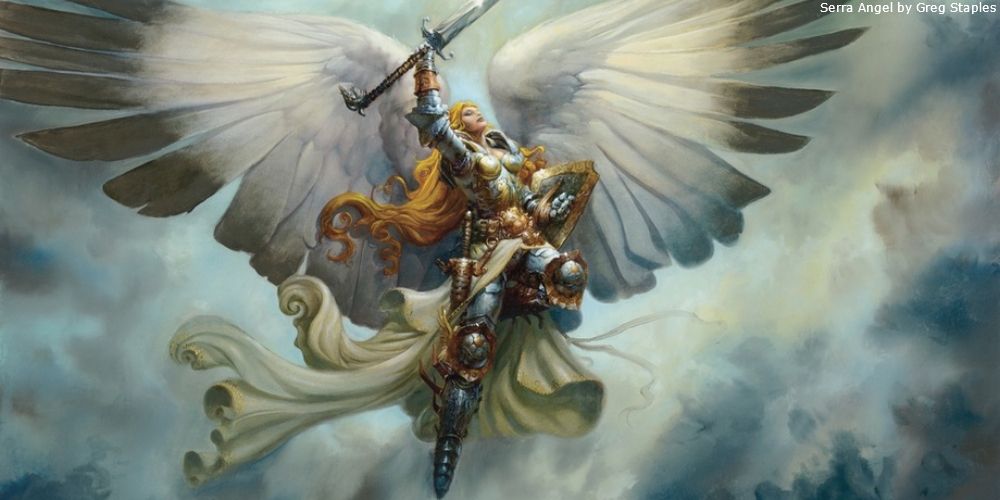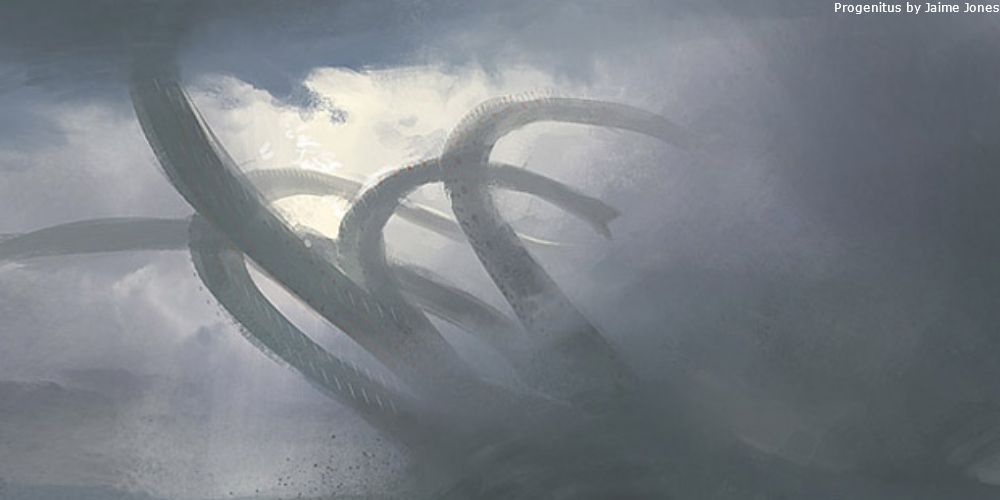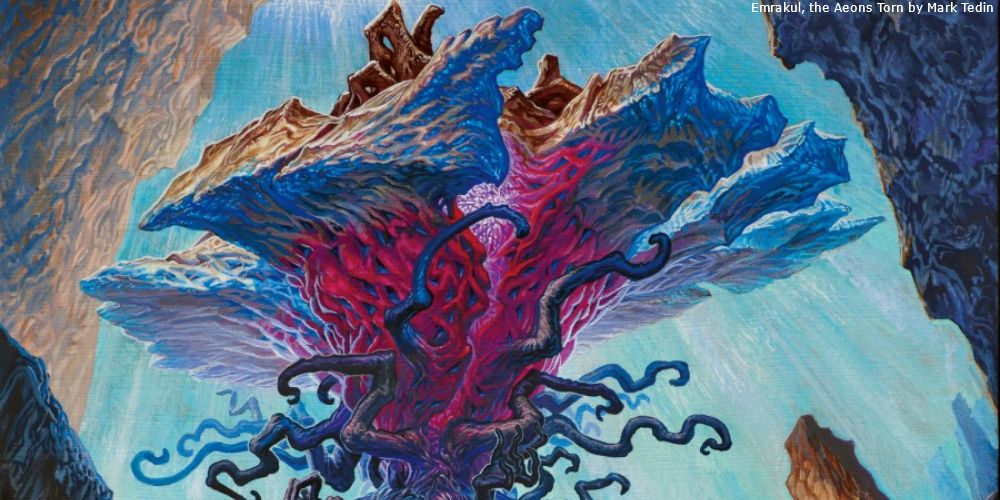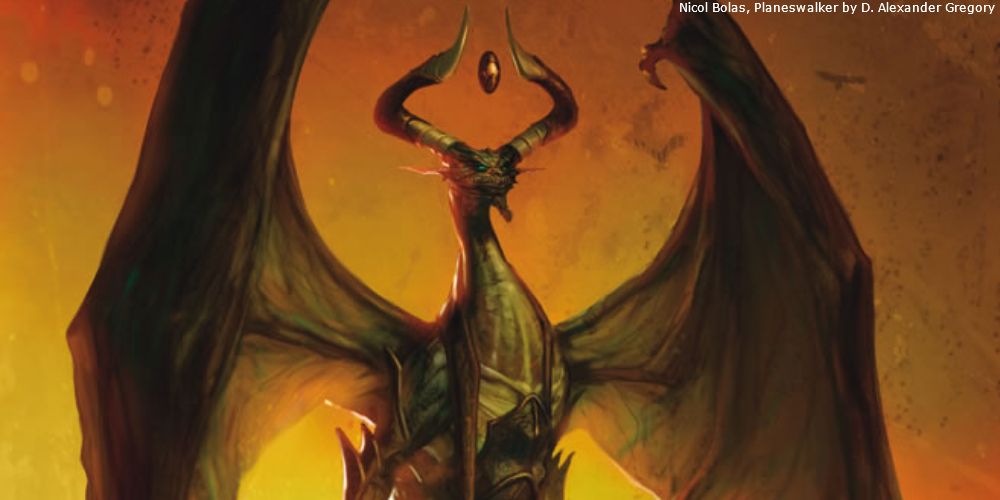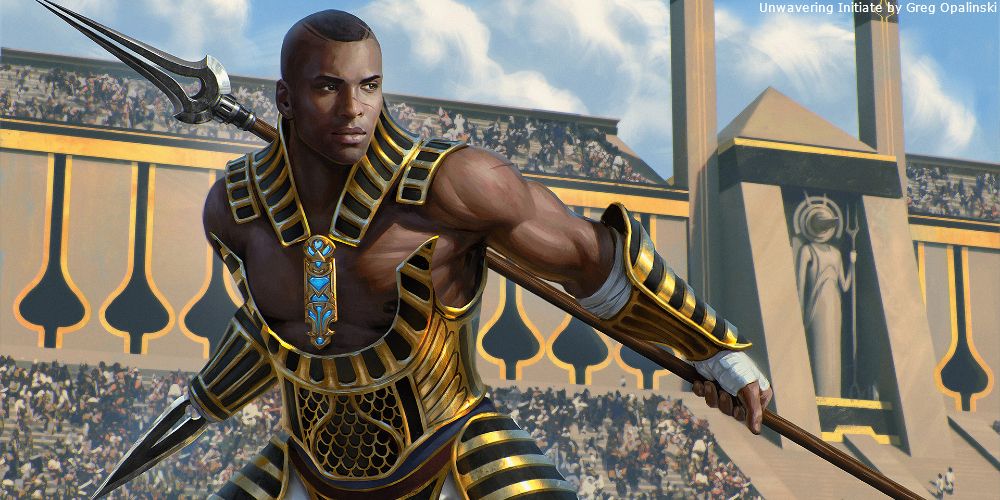Quick Links
Magic: The Gathering is one of the few properties that can be rightly said to have changed gaming forever. Its collectible nature and endless customization options mean there is always a new deck to build or a new combo to discover, and the ever-expanding lore is consistently adding new worlds and characters. Dozens, if not hundreds, of games have tried to replicate Magic's success but none have ever toppled the original trading card game.
Unlike many games, Magic was an instant hit from the moment players got their hands on it. Tap some Islands and cast Time Walk as we go back to the early 1990s and see how the phenomenon started.
Wizards Of The Coast
The name Wizards Of The Coast is synonymous with Magic. The game's publisher since the beginning, Wizards has gone on to acquire several storied gaming properties including Dungeons & Dragons and is a major part of its parent company Hasbro's success. Wizards Of The Coast was founded by Peter Adkison in 1990 as a publisher for role-playing games. Adkison named the company after a mages' guild in his D&D campaign at the time.
While the early WOTC published books from third parties like the Talislanta series, they also had their own in-house setting called The Primal Order. The Primal Order was meant to be a rules-neutral supplement that could be used with any game system, but the book's mention of the RIFTS system landed them in legal trouble with rival publisher Palladium Books, who owned that property.
Richard Garfield
Philadelphia-born Richard Garfield was an avid gamer and made a hobby of designing his own games throughout high school and college. In 1985, he developed a board game called RoboRally for which he hoped to one day find a publisher.
At the time, however, he was focused on higher education and would eventually earn his Ph.D in combinatorics in 1993.
In 1991, Garfield pitched RoboRally to Wizards Of The Coast, hoping to finally get his game on store shelves. While Wizards liked the game, in which players competed to move robots on a board by predefining their moves (essentially "programming" them each turn), they felt that such a game would be too expensive for a company of their size to produce. They were sufficiently impressed with Garfield's work that they asked if he would be willing to design a game for them — they were looking for a game that was easily portable, making it easy to play at conventions. Garfield took the job.
What happened next is explained in Shannon Appelcline's 2014 book Designers & Dragons; digging through his old notes, Garfield based his new game on a card game he had developed in 1982 called Five Magics. He had intended for the game to be similar to the board game Cosmic Encounter, one of the first to have wildly different abilities for each player based on the species of their alien empire. By combining Five Magics with an experimental idea he had for making a game out of collectible baseball cards, he put together a set of rules for a game he called Manaclash.
The Dawn Of Magic
Wizards Of The Coast loved Manaclash, but the ongoing litigation with Palladium restricted their ability to create a new product. Fearful that if the lawsuit went poorly Palladium could take their new project from them, Wizards created a shell company called Garfield Games to develop Manaclash. Garfield continued to work on the game, playtesting with his fellow students at the University of Pennsylvania.
In 1993, the Palladium lawsuit was settled following arbitration from the nonprofit Game Manufacturers Associaton, or GAMA, and Garfield Games was dissolved (Appelcline 2014). Development for the project moved directly under Wizards Of The Coast, and the game — now titled Magic: The Gathering — made its first appearance at Origins Game Fair in Dallas, Texas in July of that year. Word of the new game quickly spread, and the next month at Gen Con in Indianapolis, Indiana, Wizards sold out the game's entire print run; 2.5 million cards, an amount they had expected to carry them through the end of the year.
Suddenly flush with money from the game's runaway success, Wizards quickly expanded and brought Richard Garfield on as a full-time game designer... and yes, they published RoboRally the following year, which won two Origins Awards in 1994.
Players couldn't get enough of Magic, and by the end of 1995 Wizards Of The Coast had gone from a publishing company operating out of Peter Adkison's basement to a multimillion-dollar industry titan.
Fallen Empires
The early days of Magic saw demand that vastly exceeded supply. Wary of overprinting, Wizards Of The Coast kept their print runs small in case the game turned out to be a passing fad. As a result, retailers would run out of stock in a matter of hours each time a new shipment came in. This is part of the reason early Magic cards are so expensive for collectors — there just weren't that many made.
The fifth expansion for the game (or "set" as they've come to be known) was Fallen Empires. Having quickly sold through their print runs on every previous set, Wizards dramatically increased production for Fallen Empires. The previous set, The Dark, saw 75 million individual cards printed, but according to Wizards' announcement at the time Fallen Empires printed roughly five times that quantity.
Unfortunately, Fallen Empires was the first set that wasn't particularly well-received by players. Changes to the rarity system and fewer competitive cards in the set caused interest to quickly fade, and retailers were stuck with boxes upon boxes of what they had thought would be a sure thing. Fallen Empires would not sell out at Wizards Of The Coast until 1998.
In spite of this, the game was popular enough that players stuck with it. There would be more bumps in the road, as not every set can be a winner, especially if developers want to experiment and try new things to keep the game fresh. Ultimately, though, Magic has stayed the dominant force in the hobby industry — as any games retailer can attest, Magic: The Gathering is the product that pays the bills.
The Trading Card Game Bubble
Following Magic's runaway success, there was a period in the mid-1990s where everybody was trying to be the next big trading card game. If there was a property to be licensed, chances are you can find evidence of an ill-fated collectible game from the period. Some, like Star Wars and Star Trek, were able to see some success based on name recognition, but countless other properties — including Sailor Moon and even The Simpsons — had games that were all but dead on arrival.
Trading card games that built their own properties had more success, most notably Yu-Gi-Oh!, which was released first as a manga and anime series then brought to life as a card game. Others, like Legend of the Five Rings and another Richard Garfield project called Netrunner ran for a while as trading card games before transitioning to other formats.
Commander
Commander is arguably the most popular format in Magic today. Focused on multiplayer, it allows a large group to play together, and the high variance in its decks allow for plenty of mayhem at the table. While the format is eagerly supported by Wizards Of The Coast, it was developed by a fan. According to Polygon, Adam Staley played Magic since the very beginning but quickly got tired of seeing tournaments where all the competitive decks were largely the same. His preferred format only allowed one copy of any card outside of basic lands. He called the format Highlander, after the movie where "there can be only one."
With the release of the Legends set and the introduction of Legendary Creatures to the game, Staley devised a new version of his format where each deck was "commanded" by one of these named characters. He called it Elder Dragon Highlander, or EDH, after the set's Elder Dragon characters — one of whom was Nicol Bolas, who would eventually become one of Magic's primary antagonists.
When Staley moved to Alaska in 2002, he met a Magic judge named Sheldon Menery there as part of his local gaming community. After a few games of EDH, he expanded on the rules to create a more codified format aimed at multiplayer. Eventually, Menery had the opportunity to introduce the format to Scott Larabee, who ran the Pro Tour for Wizards Of The Coast. EDH took off internally at Wizards, and after years as a fan-run format it was made an official format in 2011 with help from Menery and his fellow judges.
Tournaments
One of Magic's biggest impacts on hobby gaming was its full-throated embrace of organized play. Almost immediately, Wizards created an organization called the Duelists' Convocation International (or DCI) to oversee a global tournament circuit and provide a consistent, quality experience at local hobby shops. Now part of the Wizards Play Network, the DCI's focus was making gaming into a social event. Players weren't just playing cards at the hobby shop — they were participating in Friday Night Magic. Pre-release tournaments allowed players to get their hands on new cards early and play them in a competitive setting right away.
As the game, the company, and the community grew, numerous high-level events with cash prizes for the best players emerged. The first World Championship was held at Gen Con in 1994, and the inaugural Pro Tour debuted in 1996 in New York City. Since then, players around the world have followed the tournament scene, looking for tips from the best players, rooting for their hometown heroes, and dreaming of a shot at the glory themselves.

